Best mic stands 2025: Our pick of microphone holders you can rely on
Whether you’re a vocalist, you're miking up an instrument or you're a podcaster looking for a sturdy desktop microphone stand, these options are perfect
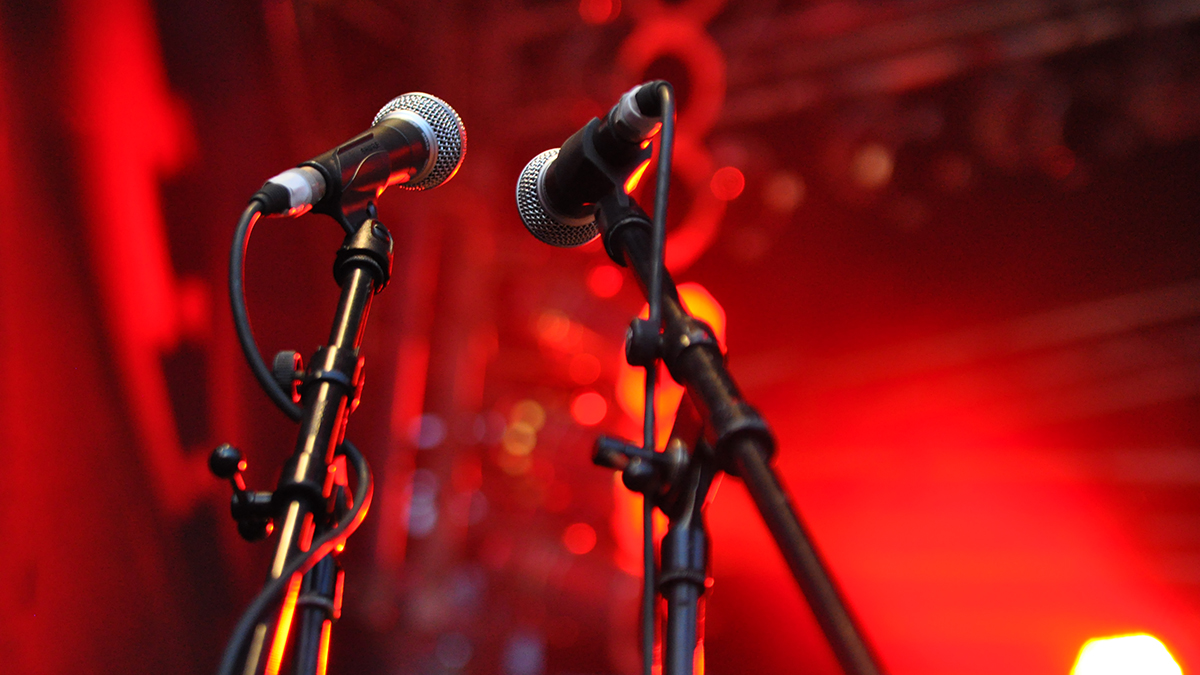
Microphone stands are the unsung heroes of both the studio and stage. Often relegated to the dusty end of the shopping list when you're wishlisting new music gear, they are every bit as essential as the gear their designed to hold – after all, a mic that's not held securely in position can lead to disastrous results. With that in mind, here we're taking a look at the very best mic stands for every use and budget.
In this guide, you'll find products from all the major players in this particular field, including Ultimate Support, RØDE, and K&M. And we've also included mic stands at every price point to ensure that musician is catered for, no matter what you have to spend.
To find out more about what to look for when buying a microphone stand, read our buying advice at the foot of the page, or keep scrolling to get straight into our top picks.

Dave has been making music with computers since 1988 and his engineering, programming and keyboard-playing has featured on recordings by artists including George Michael, Kylie and Gary Barlow. A music technology writer since 2007, he’s Computer Music’s long-serving songwriting and music theory columnist, iCreate magazine’s resident Logic Pro expert and a regular contributor to MusicRadar and Attack Magazine.
Best mic stands: Product guide
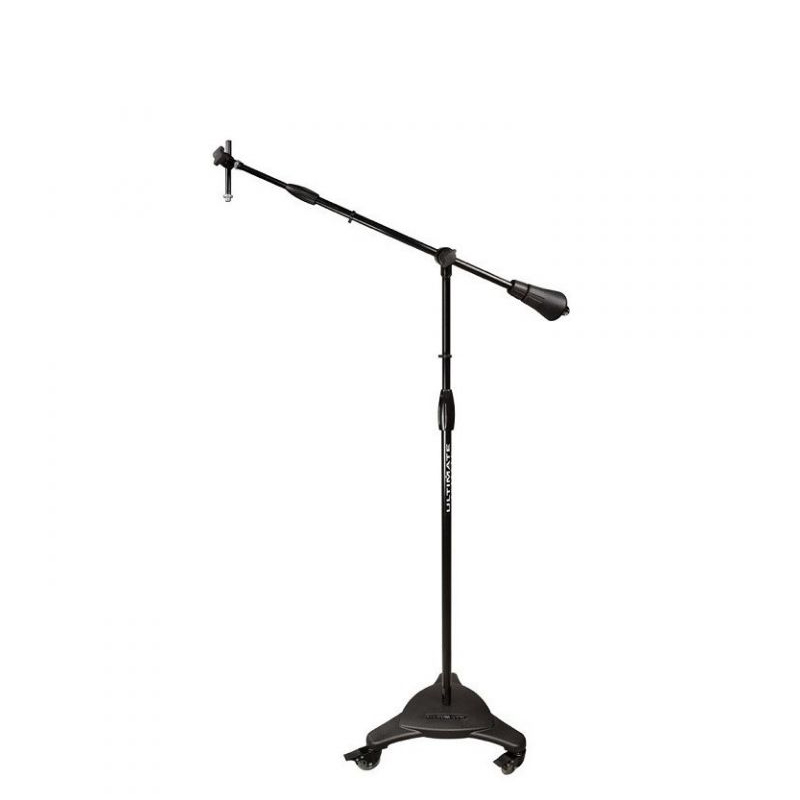
Style: Tripod boom
Construction: Steel
Height: 51.5 – 82.75” / 1.3 – 2.1m
+ Solid studio workhorse
+ Hugely extendable
+ Adjustable counterweight
- Rather pricey
Like a traditional mic stand on steroids, the Ultimate Support MC-125 boasts a cast-metal base and a 5.7lb / 2.58kg counterweight, whose position can be adjusted along the rear end of the boom.
That heavyweight base has a hybrid circular / tripod design to provide extra stability, and as a bonus features a lockable castor at each corner. This means you can wheel the stand freely into the desired position and then lock it into place by stomping on the castors’ footplates.
The greater stability provided by the base and counterweight allows for some serious extendibility – height adjustment ranges from 51.5 – 82.75” / 1.3 – 2.1m, while the boom arm is capable of extending from 35 – 61” / 0.9 – 1.55m.

Style: Tripod boom
Construction: Steel tubing
Height: 26 – 71” / 0.66 – 1.8m
+ Cheap as chips
+ Lightweight
+ Easy to use and store
- Too light for some
There are a lot of cheap boom stands on the market, but the Samson MK10 represents the perfect blend of quality, durability and affordability, and as such is one of the best performers in its price bracket.
It’s very portable, folding down to a mere 25” / 0.63m when collapsed; but the trade-off is that it’s not the tallest stand out there, reaching a maximum height of 71” / 1.8m. It comes with a standard push clip to hold an SM58-style mic, and features a unique cable clip on the side of the boom clamp to help keep things tidy.
At only 3.3lb / 1.5kg, this is firmly at the more lightweight end of the scale, so we wouldn’t recommend using the MK10 with anything particularly heavy, but for general light duties around the studio it performs brilliantly.

Style: Round base
Construction: Steel tubing, die-cast base
Height: 35 – 63” / 0.9 – 1.6m
+ Chrome-plated finish is stunning
+Sturdy
+Easy height adjustment
- Some will need a boom arm
Boasting a simple, durable design, the AtlasIED MS-10C is a tough cookie that’ll serve you well when gigging or recording. Available in chrome or black (the latter is called the MS-10CE), the stand features a wear-proof three-piece clutch that enables you to adjust the height from 35 to 63 inches (0.9 to 1.6m).
The 11.25lb / 5.1kg weight is concentrated around the edge of the 9.8” / 0.25cm-diameter base, which is equipped with rubber feet to absorb unwanted bumps and protect floor surfaces. This helps to maintain stability, resulting in a solid stand that won't move unless you want it to.
As a bonus, all of the parts are field-replaceable, adding to the MS-10C’s appeal as a long-term investment.

Style: Tripod boom
Construction: Steel tubing
Height: 42 – 94.5” / 1.07 – 2.4m
+ Unique hideaway boom
+ Well-engineered
+ Versatile
- Overkill for some
The Hercules Tripod Base Hideaway Boom Stand MS533B is a sturdy number that’s designed for speed and convenience. At first glance, it appears to be just a simple, single-pole stand with a tripod base, albeit one with a nifty one-handed, squeezable EZ clutch to facilitate rapid height adjustments.
However, unscrew the giant boom clamp knob and a hidden inner extension tube can be pulled out from the main stand. Extending this to the max enables you to alter the angle and then push the tube back through the joint to fashion a boom arm. It’s a slick bit of engineering that means you can switch between a single-pole and a tripod boom stand with ease.
Couple this with the EZ Adaptor Flip Clip that snaps onto the end of the arm and locks into place with a quick-release lever (no more tiresome screwing), and you have one of the most stress-free stands in the business.

Style: Scissor arm boom
Construction: Steel tubing
Height: 33” / 0.84m
+ Instant, noise-free adjustment
+ Professional look
+ Dual mounting options
- Not for bands/recording
A professional-standard scissor arm boom for the studio, RØDE’s PSA1 is primarily intended for use with the company’s large Podcaster, Procaster and Broadcaster mics – though it’ll work with any mic / shockmount combination weighing around 2.4lb / 1.1kg.
The stand is supplied with velcro straps to keep your cables tidy, while the springs are internal, resulting in a sleeker look.
Equipped with both a C-clamp for fixing to a desktop up to 2.2” / 56mm thick, and a drill-through flush mount for a more permanent installation on desks up to 2.75” / 70mm thick, the PSA1 has a vertical reach of 33” / 0.84m and a horizontal reach of 32” / 0.81m, and is capable of swivelling a full 360 degrees, making it ideal for podcast and broadcast studio setups.
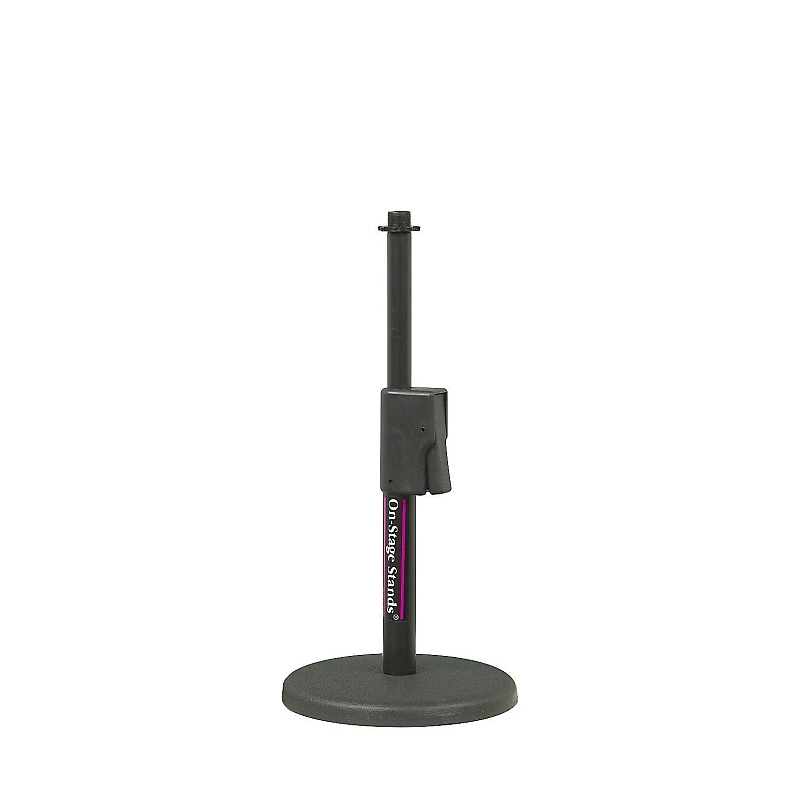
Style: Desktop
Construction: Steel tubing, die-cast base
Height: 9.5 – 16” / 0.24 – 0.4m
+ Great value
+ Quick-release trigger clutch
+Solid build quality
-Not always readily available
Essentially a shorter, desktop version of a standard, round-base mic stand, the On Stage DS7200QRB embodies the phrase ‘everything you need and nothing you don’t’. Its 5.9” / 150mm-diameter steel base weighs in at a hefty 2.9lb / 1.3kg, making it sturdy enough to support the heaviest of mics without fear of toppling over.
The single shaft that sprouts from the centre of the base extends from 9.5 – 16” / 0.24 – 0.4m by way of a quick-release trigger clutch, allowing for quicker adjustments than the traditional single-axis twist clutch. The shaft terminates in a standard ⅝” / 15.8mm thread that’s ready to accommodate your chosen mic clip or shockmount.
Simple yet effective, with a reassuringly well-made feel despite the low price, the DS7200QRB is a solid choice for podcasting, announcing or voiceover work.

Style: Tripod boom
Construction: Steel tubing, zinc die-cast base
Height: 35 – 63” / 0.9 – 1.6m
+ Telescopic boom arm
+ High-quality
+ Versatile
- Too much for some
German company König & Meyer (aka K&M) is one of the biggest names in microphone stands, so you can pretty much guarantee that anything with its name stamped on it is going to be a premium product.
The 210/9 may be a no-frills stand, but such is its quality and performance that it’s well worth shelling out that little bit extra for.
The clamp is the classic T-bar arrangement, while the boom has two extension points for an overall maximum extension of 29” / 0.75m. Stable, solid, high-quality, super-adjustable and complete with cable clips to keep everything neat, this is a truly great stand.
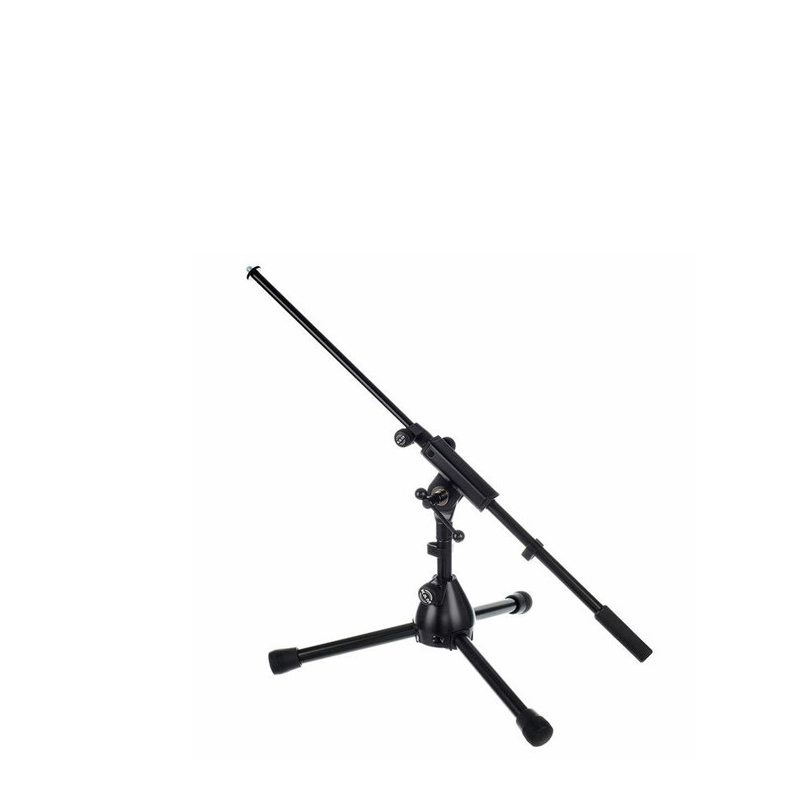
Style: Low-profile tripod boom
Construction: Steel tubing
Height: 11” / 0.28m
+ Great for kick drums and guitar amps
+ Lots of pro features
+ High-quality
- Only designed for low-level tasks
Wouldn’t it be great to have a mic stand that was specifically designed to help you mike up your kick drums?
This is where the K&M 25950 comes in, the stand providing maximum stability at a minimum height. A scaled-down version of a normal tripod boom, it packs all the features you might find on a regular stand into a low-profile package with a shortened central pole.
K&M’s robust build quality is very much in evidence here; though the stand is only 11” / 0.28m tall, it still manages to weigh a hefty 6.6lb / 3kg, meaning you’ll get the stability you need.
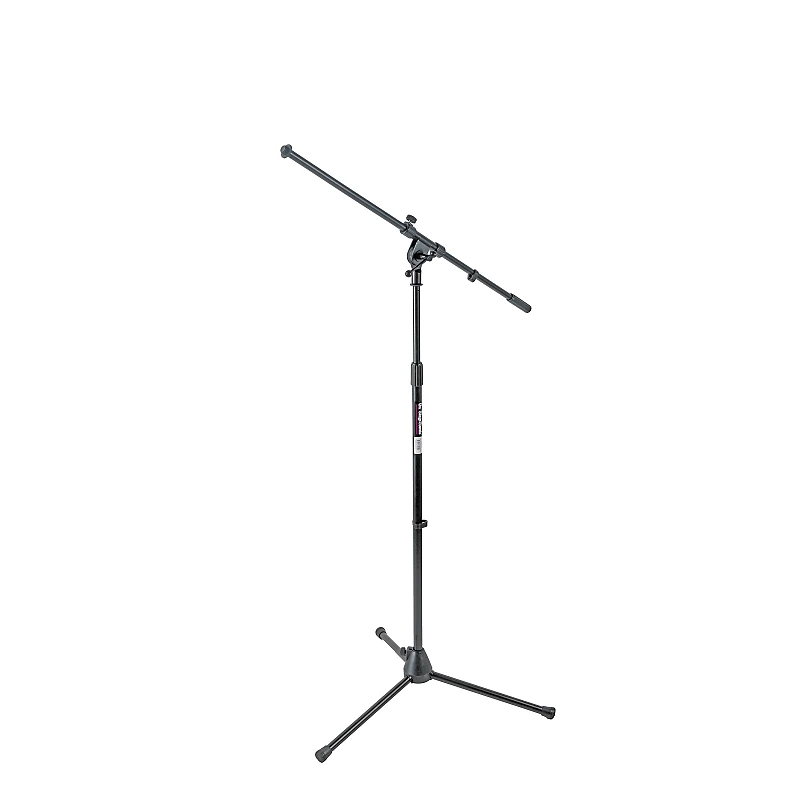
Style: Tripod boom
Construction: Steel tubing
Height: 32 – 61.5” / 0.81 – 1.56m
+ Good value
+ Easy to use
+ Sturdy and portable
- Stronger stands are available
The On Stage MS7701B is a classic example of a tripod boom mic stand. The height-adjustment clutch, folding legs and vice-like boom clamp are all of the traditional design, making the stand easy to use.
Construction is reassuringly solid, and everything tightens up nicely to hold your mic firmly in the desired position. The MS7701B is supplied with cable clips and a basic, sprung mic clip that attaches to the end of the boom arm with a standard ⅝” / 15.8mm threaded mount.
Despite being non-telescopic, the boom arm on the MS7701B has an impressive reach of 35.8” / 0.91m. There’s a similar, telescopic version available in the shape of the slightly more expensive MS9701TB.
Best mic stands: Buying advice
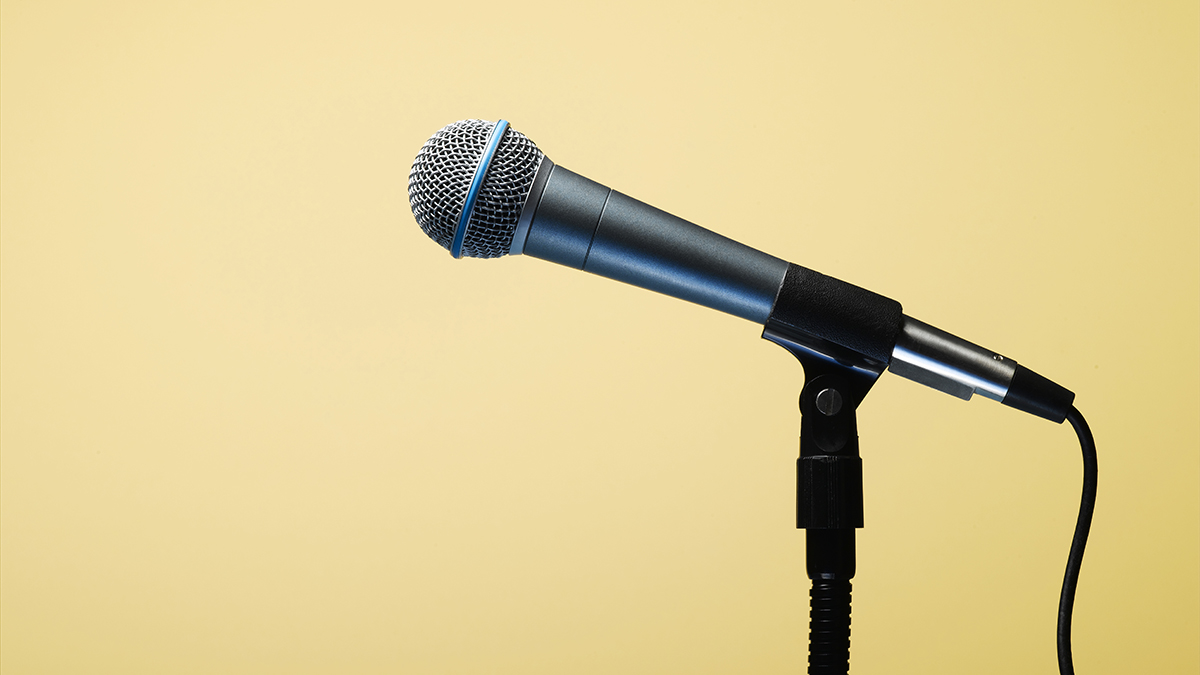
What types of mic stand are there?
There are various types of mic stand, each of which comes with its own set of benefits:
Round base mic stand. The most basic type of microphone stand features a weighted circular base with a single pole rising from its centre, onto which the microphone can be attached via a threaded clip or shockmount. The base is usually made of die-cast steel, giving it the necessary weight to hold the central pole steady. This type of stand is good for stage singers, since the small footprint of the base enables you to get up close to the stand without fear of tripping over a leg.
Tripod boom mic stand. The most common type, tripod boom mic stands have three legs at the base and an extendable boom arm sticking out sideways that holds the microphone. Though these stands can be adjusted to almost any position you might need in a live or studio environment, care should be taken not to over-extend the centre of gravity so that the stand topples over with the weight of the mic. To combat this, some models include counterweights on the rear section of the boom arm to balance the weight of the microphone attached to the other end. Another potential pitfall with tripod boom mic stands is the trip hazard they can present on stage, which is why round-based stands are often preferable for gigging.
Scissor arm boom mic stand. Similar in design to an anglepoise lamp, scissor arm mic stands are designed to be mounted to a desk or wall, and allow flexible positioning of a mic when seated. Originating in broadcast studios and increasingly popular with podcasters, scissor arm boom mic stands are articulated with a central hinged elbow joint and springs to allow quick and easy repositioning. They also usually swivel at the base so that you can swing the mic out of the way when not in use.
Desktop mic stand. As the name suggests, desktop mic stands are designed to hold a microphone securely in place while on a desktop or similar flat surface, and as such are mostly used for podcasting, voiceovers, videoconferencing or singing while sitting down at a desk.
Anatomy of a microphone stand
MusicRadar's got your back
- Base: Mic stands usually come with either a round, heavy metal base or a set of three folding tripod-style legs (very occasionally they’ll come with both). Often, the base will feature rubber feet to help dampen vibrations, while tripod legs will be fitted with rubber or plastic end caps.
- Pole: The main part of the stand that rises up from the base, the pole is usually height-adjustable by way of the clutch. Loosening the clutch will allow you to raise an internal pole of a smaller diameter to increase the stand’s height.
- Clutch: The clutch is the part of the stand that allows you to adjust the height. The most common type is the single-axis twist clutch, where you unlock by twisting, make the adjustment and then twist back again to lock the stand in its new position. Some stands feature one-handed trigger grip clutches for a quick release, making for speedier and more hassle-free adjustments. Clutches can also be used to adjust the boom arm extension and the position of any counterweights attached to the rear of the boom arm to offset the weight of a mic attached to the business end.
- Clamp: Located at the top of the pole on a boom arm stand, the clamp is the joint that allows you to adjust the angle and extension of the boom arm. Having a solid, lockable clamp is essential to prevent the boom arm sagging under the weight of the mic while in use.
- Clip: The clip is the part of the stand that actually grasps the microphone, attaching to the boom arm by way of a threaded adaptor. The most common sizes for these are ⅜” / 9.5mm and ⅝” / 15.8mm, and converters are available to switch between the two sizes if required – although you’ll often have to purchase these separately. Standard clips usually take the form of a sprung clamp or a static, tube-like holder made of flexible plastic designed to accommodate handheld, SM58-style microphones. These work well on stage as the mic can be removed and replaced quickly with one hand.
- Shockmount: A shockmount is an alternative solution to a clip for holding your microphone, and is usually designed to hold heavier, large-diaphragm microphones. Typically formed from two concentric rings linked by a cat’s-cradle-type arrangement of elasticated bungees, they are designed to isolate the mic from any vibrations transmitted through the body of the stand. Many large-diaphragm mics have their own compatible shockmount, but all of them will be equipped with a standard-sized thread adaptor for connecting to a stand’s boom arm.

What should I look for when buying a mic stand?
- Solidity: Especially when recording, it’s important that your microphone will be held securely and not move around during use – some heavier mics can induce sagging when attached to extended boom arms on some lower-priced stands.
- Versatility: Some stands are supplied with multiple clips and adaptors for optional shockmounts, but not all of them include these, so check whether or not you’ll need to purchase additional accessories in order to use your chosen stand with a particular microphone. Thread adaptors can be useful to convert between the two standard thread sizes – ⅜” / 9.5mm and ⅝” / 15.8mm – found on the ends of boom arms.
- Extendability: Make sure that the stand you’re looking at is sufficiently extendable for your requirements. A short tripod boom stand will be fine for kick drums and guitar combos, for example, but no good for miking up drum overheads as it won’t go anywhere near high enough.
Many boom stands are telescopic, meaning they have smaller tubes housed within them that can be pulled out to increase the range. This makes them useful for trickier scenarios such as miking up a grand piano or placing spot mics on specific areas of a drum kit. As always, care should be taken not to over-extend to the point where the weight of the mic is making things unstable by being outside the stand’s centre of gravity. This can either cause the boom arm to sag over time, or destabilise the stand so that the whole thing topples over.
- Stability: Centre of gravity while in use is an important factor, which is why round-base stands don’t tend to feature boom arms. With a heavy mic attached to the end of a boom, the centre of gravity is shifted upwards and outwards, making the stand more likely to topple over. For this reason, most boom stands tend to have tripod bases, so that the boom arm can be extended in line with one of the three legs for improved stability. On the other hand, tripod stands can present more of a trip hazard for unwary vocalists on a darkened stage, making round-base stands a more practical choice for this use case.
- Durability: If you envisage doing regular setups and packdowns in the studio or on stage, be sure to pick a mic stand that’s durable and whose moving parts can stand up to a lot of punishment. All of the stands on this list are constructed from metal tubing, and quite a few stands feature replaceable components, removing the need to shell out for a whole new stand if just one part wears out.
- Foldability: If you don’t have much storage space where you’re working, a stand that folds up into a compact footprint should be high on your list of requirements. Most tripod stands have folding legs and a base that can slide up the main pole for storage, while the boom arm can usually be collapsed and folded down parallel to the main stand. Most round-base stands only reduce down to their minimum height for storage, although it’s possible to find some with stackable bases that don’t compromise too much on stability.
How we choose the best mic stands
Here at MusicRadar, we are experts in our field, with many years of playing, creating and product testing between us. We live and breathe everything music gear related, and we draw on this knowledge and experience of using products in live, recording and rehearsal scenarios when selecting the products for our guides.
When choosing what we believe to be the best mic stands available right now, we combine our hands-on experience, user reviews and testimonies and engage in lengthy discussions with our editorial colleagues to reach a consensus about the top products in any given category.
First and foremost, we are musicians, and we want other players to find the right product for them. So we take into careful consideration everything from budget to feature set, ease of use and durability to come up with a list of what we can safely say are the best mic stands on the market right now.
Find out more about how we test music gear and services at MusicRadar.
Related buyer's guides
- Best live vocal microphones: the finest gigging mics you can buy today
- Best podcast microphones: podcast mics for every level and budget
- Best USB microphones: All-in-one mics for podcasting, streaming and more
- Best cheap microphones: budget microphones ideal for the studio or stage
- Free your performance with the best wireless microphones
- Keep your lyrics or sheet music in check with the best music stands
Want all the hottest music and gear news, reviews, deals, features and more, direct to your inbox? Sign up here.
Dave has been making music with computers since 1988 and his engineering, programming and keyboard-playing has featured on recordings by artists including George Michael, Kylie and Gary Barlow. A music technology writer since 2007, he’s Computer Music’s long-serving songwriting and music theory columnist, iCreate magazine’s resident Logic Pro expert and a regular contributor to MusicRadar and Attack Magazine. He also lectures on synthesis at Leeds Conservatoire of Music and is the author of Avid Pro Tools Basics.